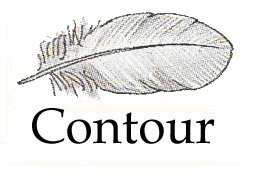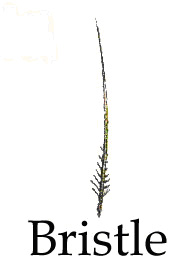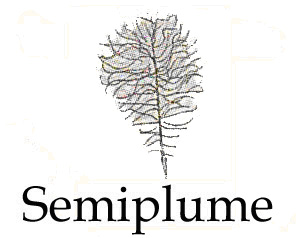
Contour feathers form most of the surface of birds, and give them their characteristic smooth round shape, which streamlines them for flight. Two specialized forms within the contour category, remiges, wing flight feathers, and retrices, tail flight feathers, display different shapes.

Identify remiges by their asymmetry with the vane much smaller on one side of the rachis than the other side because the pressures on the leading edge of the feather greatly exceed those on the trailing edge. Coverts, the majority of contour feathers, cover the bases of the flight feathers. Contour feathers also give the birds their color and provide a defense against physical objects, sunlight, wind and rain. Remiges include the long primaries, located near the wingtip, and the shorter secondaries, which line the trailing edge of the inner wing. The primaries anchor to the avian equivalent of the mammalian hand bones, called the manus, while the secondaries attach to the ulna in the “lower arm.” Melanin blackens the tips of the primaries of many large birds that fly great distances such as the Snow Goose and White Pelican. The durability of melanin lessens wear on the wingtips, the equivalent of a propeller for the bird.

When the weather is bad and they can't feed they will go into a state of torpor to save energy.
The hummingbirds are still and stiff and cannot fly. Incubating and brooding females don't go into torpor; otherwise, eggs and un-feathered nestlings would perish. This swing from hyper-activity to torpor and the gorging on food, reminds me so much of my sons in their teenage years.
Retrices perform an important function in flight control, especially in enabling a bird to change direction or to reduce flight-speed quickly. In some species, the retrices have additional specialized uses. Woodpeckers prop their short, stiff tails against tree trunks to support themselves while they hammer at the bark. A number of birds, among them peacocks, birds-of-paradise and lyrebirds, have developed elaborate displays that involve modified retrices or upper coverts.

Down feathers, wholly fluffy in form, rise from the tip of a very short shaft and lack interlocking barbicels. They insulate the adult bird and constitute the first feather coat, natal down, of most young birds. We use down feathers in sleeping bags and eiderdowns. Arctic-nesting Eider Ducks produce down feathers whose insulating quality exceeds that of domestic geese, chickens and ducks that breed in temperate zones.
Some birds sport a supply of powder down feathers, which grow continuously, with small particles regularly breaking off from the ends of the barbules. These particles produce a powder that sifts through the feathers and acts as a waterproofing agent and a feather conditioner. The Mourning Dove that hit my window left a dirty ring produced by powder down feathers.

Bristles, most developed on species that catch active, flying insects such as Tyrant Flycatchers, Nighthawks, and Nightjars, occur around the eyes and mouth. They may also cover the nostrils of some birds such as crows and jays. Some bristles act as eyelashes on ground-dwelling birds.

Semiplumes function to fill in between contour feathers and downy feathers.
Filoplumes, hair-like feathers, consist of a very fine shaft with a few short barbs at the end. Typically, other feathers cover them. Filoplumes appear to function as pressure and vibration receptors that sense the location of other feathers to enable the bird to adjust them. These feathers necessitated my singeing plucked chickens.
We began this closer look at the types of feathers with a naked bird and, end it with naturally featherless areas. Brood patches are zones where the feathers fall out during or immediately prior to incubation of the eggs. These areas of bare skin on the bird’s abdomen contain a heavy infusion of blood vessels, which allow the incubating adult bird to transfer heat to the eggs thus speeding up development of the embryo. Brood patches, either one large patch or several smaller ones equating with the number of eggs, occur because feathers insulate so well that none of the adult's body heat would reach the eggs without them. Paradoxically, the absence of feathers looms as large in the survival of bird species as the contour, semiplume, filoplume, and bristle feathers.
Back to ... Mendocino Coast Audubon Society Newsletter Articles | Home page